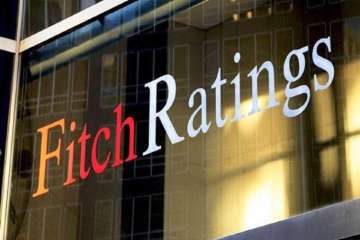Relief to telcos not sufficient to offset unpaid dues: Fitch
The divergence between Bharti's and Vodafone Idea's financial performance continued in 2QFY20, while Jio continued to report strong revenue and EBITDA growth. During 2QFY20, Bharti reported a 1 per cent rise in revenue and 3 per cent growth in like-for-like EBITDA quarter-on-quarter (q-o-q).

The decision by all three private Indian telecommunication companies to raise tariffs from December 2019 and a two-year moratorium on payment of spectrum dues are positive for the industry, Fitch Ratings said. However, these are unlikely to be sufficient to offset the impact of a recent Supreme Court judgement for incumbents Bharti Airtel (BBB-/Rating Watch Negative) and Vodafone Idea Ltd.
The Supreme Court ruled against the telcos in a 14-year-old dispute on the definition of adjusted gross revenue (AGR) on which the incumbent operators must pay hefty dues to the government. Reliance Jio (Jio), a subsidiary of Reliance Industries Ltd (RIL, BBB-/Stable) is not affected by the ruling and is likely to continue to gain revenue market share, which will support RIL's deleveraging plans.
Fitch has a negative outlook on the sector for 2020 primarily due to heightened financial risk associated with the large unpaid AGR-related dues. On November 20, 2019, the government announced plans to suspend the payment of deferred spectrum dues for two years, which will ease cash flow pressure on all three telcos.
Vodafone Idea and Bharti will benefit the most as their negative free cash flow will reduce by USD 1.7 billion and USD 850 million a year, respectively, for the financial year ending March 2021 (FY21) and FY22. The incumbents are likely to file a review petition in the Supreme Court and have also approached the government to seek other forms of relief including waiver or grant of deferred payment terms for the AGR dues and a reduction of licence fees and spectrum usage charges.
Despite the tariff hike, Fitch still believes it will take negative rating action on Bharti if it pays the AGR dues within three months and funds the payments entirely by debt.
This is because Bharti's FFO adjusted net leverage will then deteriorate to around 3.0x-3.3x in FY20 - significantly higher than the threshold of 2.5x, above which we would take negative rating action. We will resolve the Rating Watch Negative on Bharti's ratings once we have greater clarity on the timing and financial impact of the regulatory dues and any remedial measures.
The divergence between Bharti's and Vodafone Idea's financial performance continued in 2QFY20, while Jio continued to report strong revenue and EBITDA growth. During 2QFY20, Bharti reported a 1 per cent rise in revenue and 3 per cent growth in like-for-like EBITDA quarter-on-quarter (q-o-q).
This was mainly driven by an 8 per cent increase in 4G subscribers and largely flat blended tariff and subscriber base. In comparison, Vodafone Idea's 2QFY20 revenue and EBITDA declined further by 4 per cent and 15 per cent respectively q-o-q, as it lost 9 million customers while its blended tariff was flat.
Vodafone Idea's 2QFY20 EBITDA of Rs 10 billion benefitted from cost synergies from the merger of the two companies.
"We expect Vodafone Idea to continue to struggle to improve its EBITDA amid fierce competition, limited financial flexibility to invest and a shrinking subscriber base," Fitch said.
Vodafone Idea disclosed that it had to reclassify some long-term debt to current debt as it failed to meet certain financial covenants in bank loan documents, and it is in discussion with the lenders to request waivers.
Jio continued to report solid financial performance with 2QFY20 revenue rising by 6 per cent q-o-q and EBITDA up by 10 per cent. It gained about 24 million customers during the quarter to reach a total subscriber base of 355 million, ahead of Vodafone Idea's 311 million and Bharti's 279 million.
Jio's average revenue per user (ARPU), which does not include interconnection revenue, was flat at around Rs 120 even as data consumption increased to 12GB per month per user and average voice consumption was 789 minutes per month per user, lower than Bharti's 848 minutes.
ARPU per month is unsustainably low in Indian at about Rs 120 (USD 1.7) - one of the cheapest in the world.
"Assuming a 10 per cent tariff hike, we estimate the revenues of Bharti and Vodafone Idea to each increase by USD 400 -500 million, while EBITDA would grow by USD 200-250 million. Jio is likely to benefit more from the tariff hikes as it is rapidly gaining market share, and is on its way to achieving at least 400 million subscribers and around 40 per cent of industry revenue by 2H20," Fitch said.
Fitch revised the Outlook on RIL's Long-Term Local-Currency Issuer Default Rating (IDR) of 'BBB' to Positive from Stable in August 2019 based on the expectation of lower leverage as RIL's pace of investment slows and its operating cash flow rises.
The benefits from the tariff hike and two-year moratorium of spectrum payments should help RIL further deleverage towards 1.5x net adjusted debt/operating EBITDAR, the level below which Fitch would consider positive rating action. The company's Standalone Credit Profile is 'bbb' and its Long-Term Foreign-Currency IDR of 'BBB-' is constrained by India's Country Ceiling of 'BBB-'.
Also Read | Government announces big relief to telcos: Here's what we know so far
Also Read | Government to sell BPCL in big disinvestment push: 10 takeaways